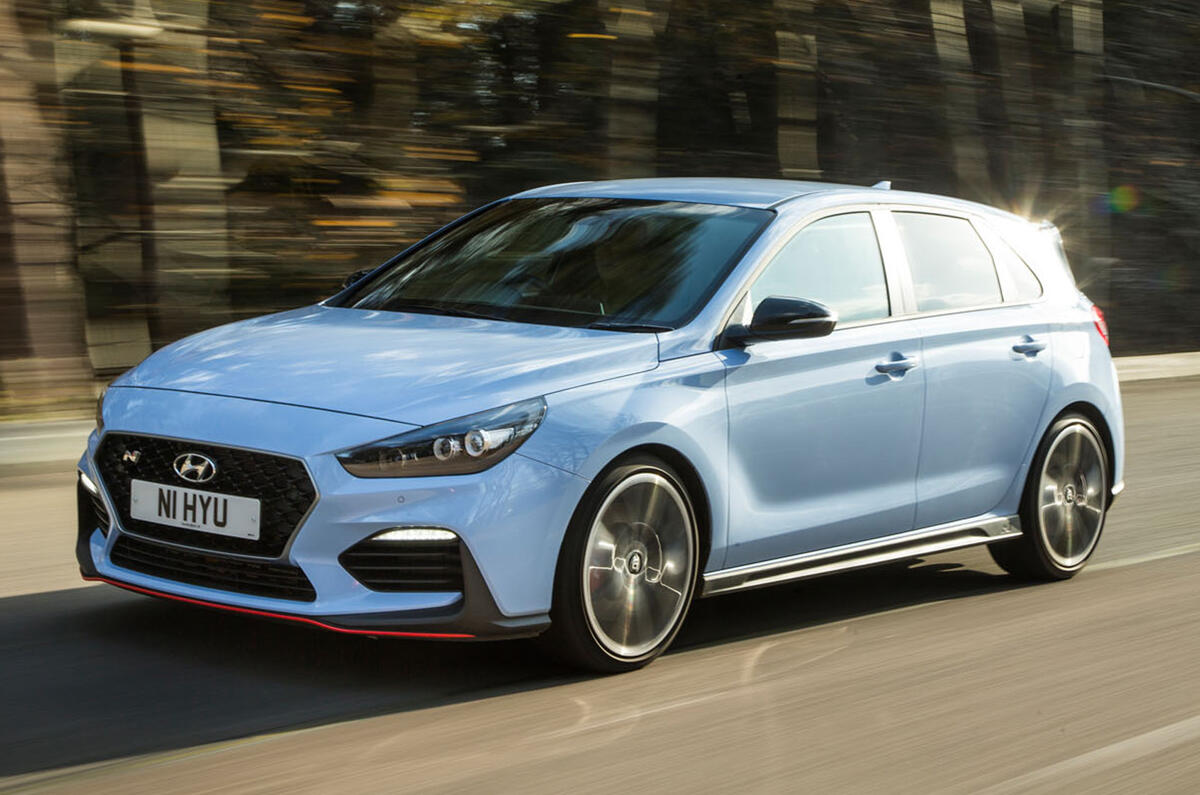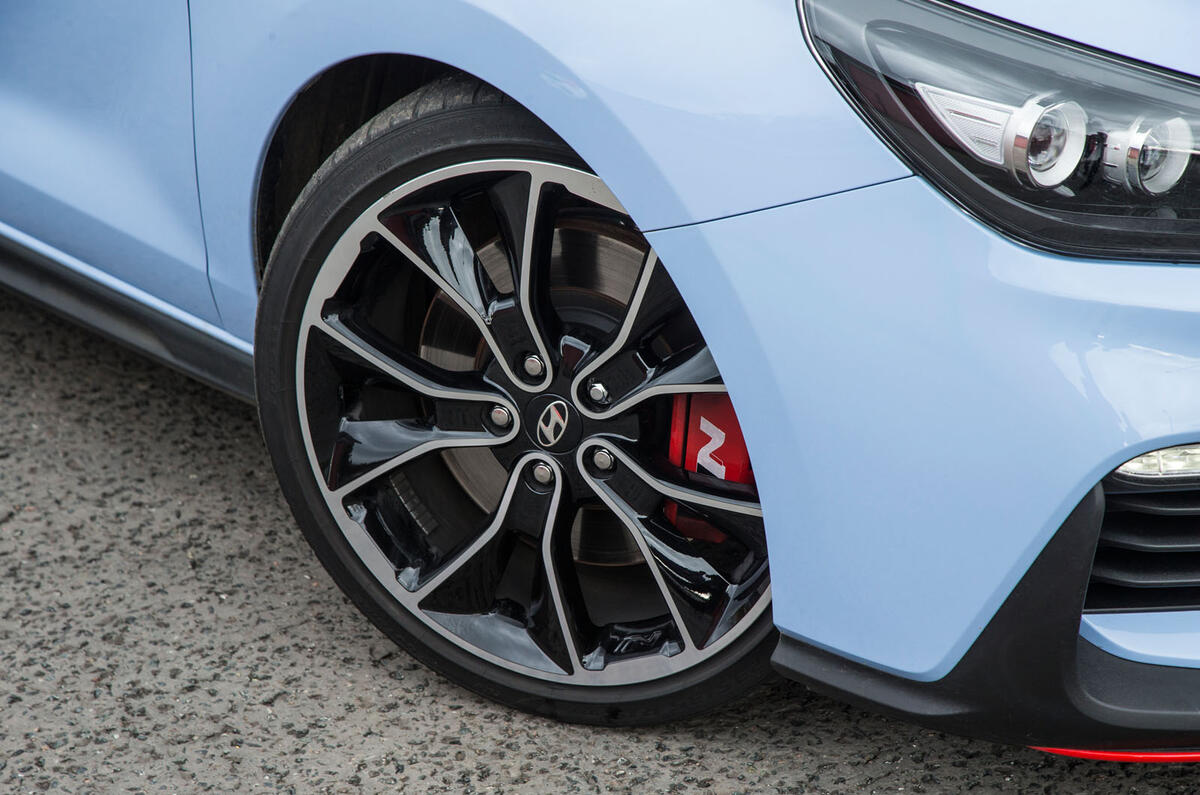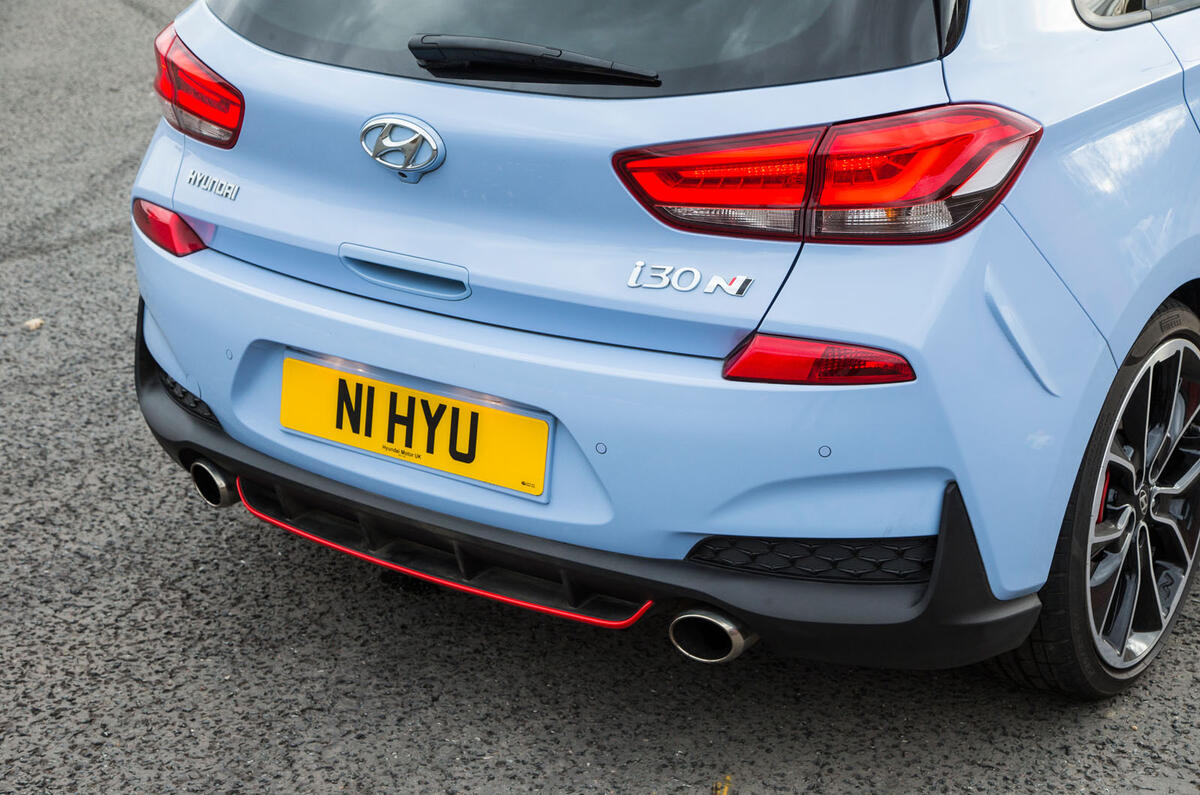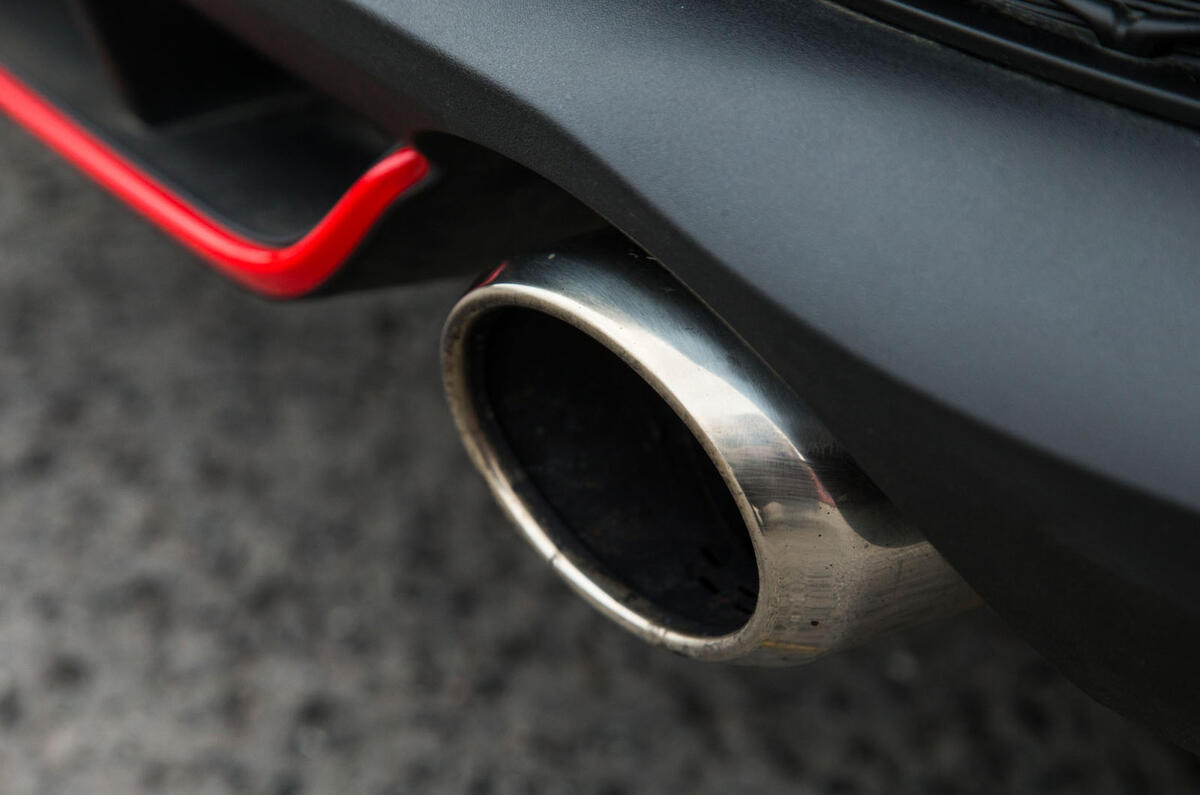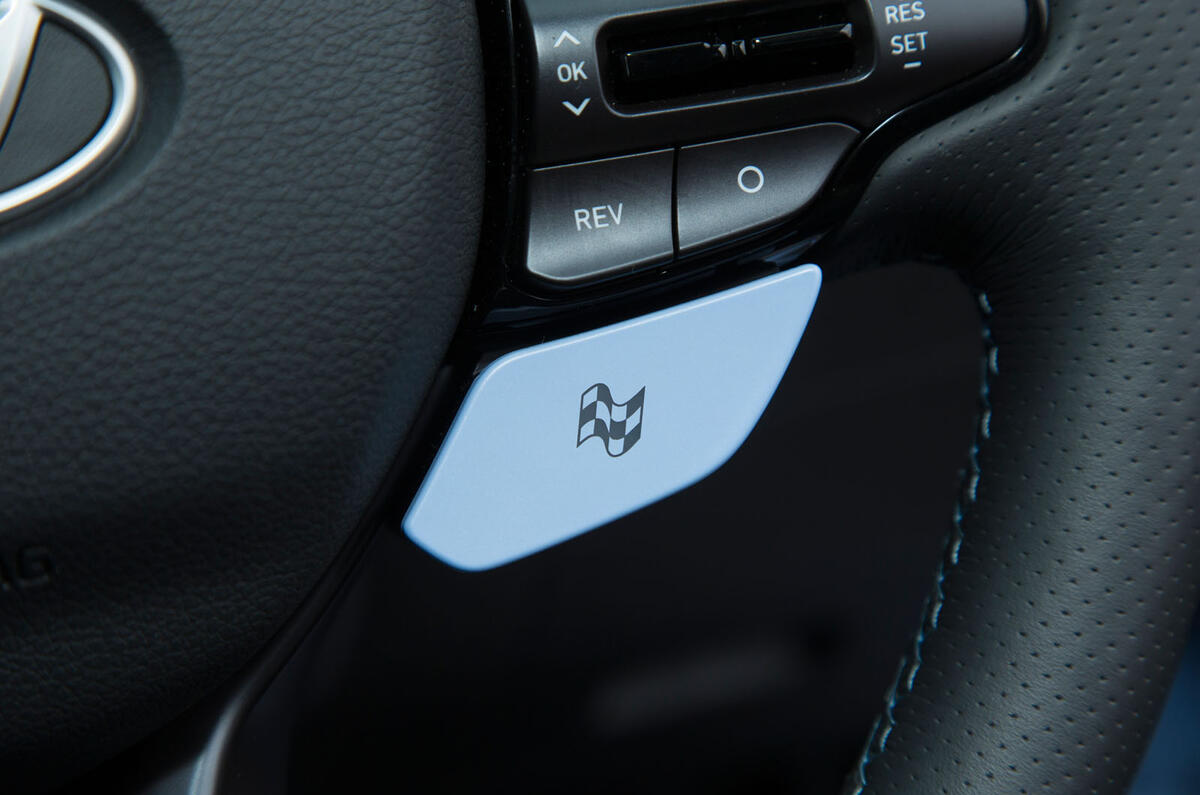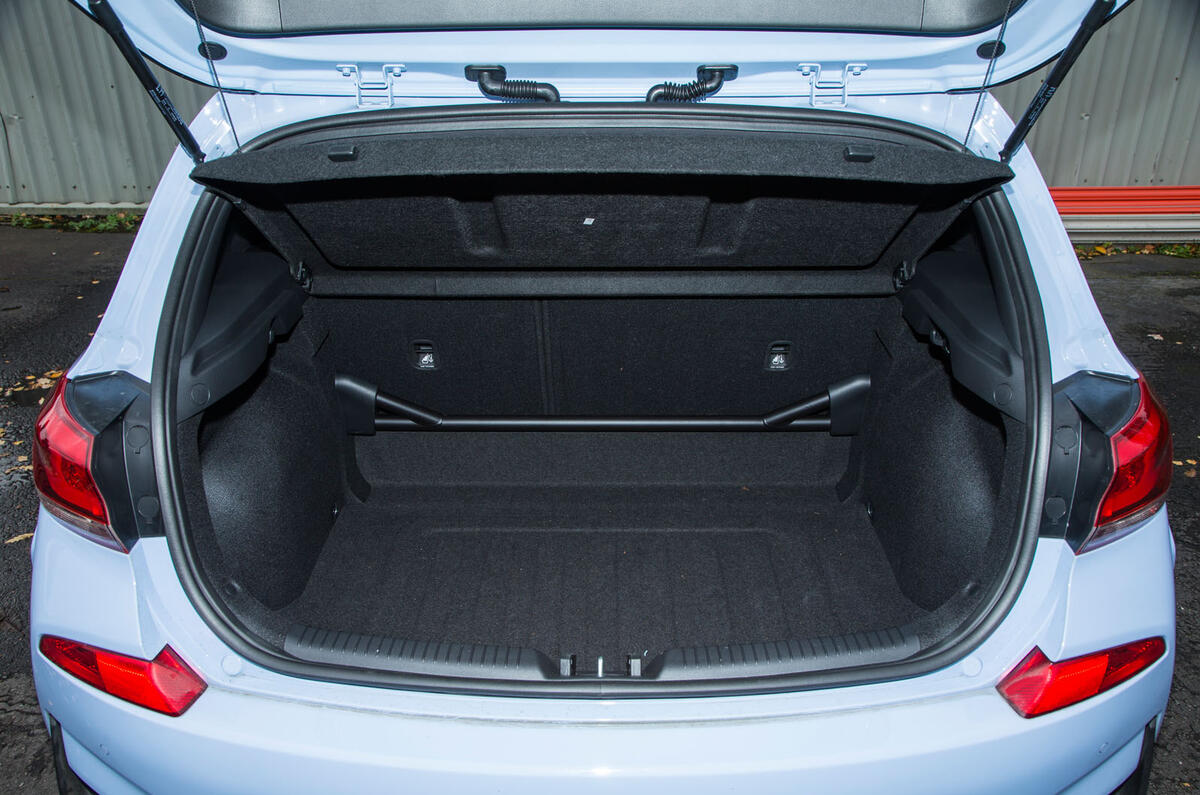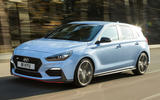Hyundai hasn’t shown a lack of commitment to the performance cause with the specification of the i30 N.
True, many of the components that we’re about to reference here are from companies particular to Hyundai’s own supply chain and lesser known than the names we’re used to – but their very presence is a clear sign of ambition and also that this car is to be taken seriously by keen drivers.
That hardware consists of a version of Hyundai’s torque-rich, turbocharged 1998cc Theta GDI petrol engine mated to a six-speed gearbox delivering drive to the front axle alone through an electronically controlled limited-slip differential.
Fitted with 19in wheels, the car sits 8mm lower than the standard Hyundai i30 hatch, wears a subdued body kit and uses adaptive suspension configurable through four modes.
Customisability is a central tenet of the i30 N experience. Along with the suspension, the car’s throttle response, rev-matching function, differential, exhaust, steering (electrically assisted, with a rack-mounted motor for additional precision) and stability control are all changeable to some extent, and owners will be able to group their preferences together in a Custom mode. The stability control can also be switched off entirely, a Biermann calling card.



